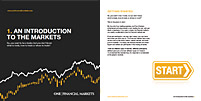

Japanese yen surges on BOJ pivot talk; Dollar steadies as rate cheer cools
Investing.com-- The Japanese yen rose to a one-month high on Thursday amid growing conviction that the Bank of Japan was close to raising interest rates, while the dollar curbed recent losses as Federal Reserve officials presented mixed cues on interest rates.
Broader Asian currencies were muted, trimming most of their initial gains as investors remained uncertain over the timing and scale of the Fed’s potential rate cuts.
Yen hits one-month high as BOJ rate hike bets grow
The Japanese yen was the best performer in Asian trade, firming 0.6% to a one-month high of 148.52 against the dollar.
The yen was boosted by a slew of factors presenting a less dovish outlook for the BOJ. Data showed average cash earnings grew more than expected in January, while a major Japanese union also won big pay hikes for some of its members- pointing to higher overall wages in the coming months.
Additionally, BOJ board member Junko Nakagawa said that the Japanese economy was making steady progress towards the central bank’s 2% inflation target- a scenario that is expected to elicit a rate hike from the BOJ.
Wage growth and inflation are the two biggest considerations for the BOJ in raising interest rates. Strong signals on both fronts saw markets now pricing in the possibility that the BOJ will begin hiking rates by as soon as its March meeting- a scenario that bodes well for the yen.
Dollar steadies as markets weigh Powell, Kashkari comments
The dollar index and dollar index futures fell 0.1% each in Asian trade, but traded marginally above a one-month low hit in overnight trade. Pressure on the dollar also came chiefly from a stronger yen.
The greenback had tumbled in overnight trade after Fed Chair Jerome Powell said the bank will cut interest rates in 2024.
But Powell offered few cues on the timing and scale of the Fed’s planned cuts, and reiterated his warning over sticky inflation limiting any monetary easing.
This warning was echoed by Minneapolis Fed President Neel Kashkari, who said that he did not see the Fed cutting rates more than twice, or even once, this year.
Kashkari’s comments spurred some pullback in bets on early rate cuts, and also helped the dollar stem its decline.
Most other Asian currencies were muted following Kashkari’s comments. An outlier was the Australian dollar, which rose 0.3% on positive trade data. The Aussie was also boosted by strong trade data from major trading partner China.
China clocked a bigger-than-expected trade balance in the first two months of 2024, with stronger exports and imports signaling some recovery in the country’s trade-heavy businesses.
But the yuan moved little on Thursday, although it did strengthen further away from the 7.2 level.
The South Korean won fell 0.1%, while the Singapore dollar rose 0.1%. The Indian rupee rose 0.1%, extending an overnight move away from the psychologically important 83 level.
Begin trading today! Create an account by completing our form
Privacy Notice
At One Financial Markets we are committed to safeguarding your privacy.
Please see our Privacy Policy for details about what information is collected from you and why it is collected. We do not sell your information or use it other than as described in the Policy.
Please note that it is in our legitimate business interest to send you certain marketing emails from time to time. However, if you would prefer not to receive these you can opt-out by ticking the box below.
Alternatively, you can use the unsubscribe link at the bottom of the Demo account confirmation email or any subsequent emails we send.
By completing the form and downloading the platform you agree with the use of your personal information as detailed in the Policy.






